Rabbit Diarrhea
Rabbit diarrhea - thin, watery, severe - can be fatal within
12 to 48 hours. Learn about the causes and treatments for diarrhea in rabbits or bunnies before a crisis arrives.
NOTE: Questions still abound regarding what causes deadly diarrhea (enterotoxemia) in bunnies. For the record - it isn't weaning. More on the relationship between weaning and bunny death from diarrhea at Baby Rabbits.
The official term for the group of diseases that cause diarrhea is enteritis.
Rabbit diarrhea (enteritis) is more common in rabbits with a diet that is high in sweet or sugary treats, or other high energy food, and too low in fiber.
Such a diet can result in an overload of carbohydrates in
the guts. The excessive carbs break down into
glucose, providing abundant food for a bloom of disease bacteria, which then
produce toxins. Enterotoxemia is the result; which disease depends on
which germ is causing the rabbit diarrhea.
What you see:
- Copious thin brownish, watery diarrhea, or sticky, foul-smelling pudding-like diarrhea covering the hind end, and most likely the feet, as the rabbit will have walked in the poo.
- Rabbit is desperately thirsty - he drapes himself weakly over the water crock, or within reach of the water valve.
- Rabbit is not eating - his guts are in a world of hurt
- If you pick up the rabbit, you hear water-sloshing sounds from a raw, swollen, liquid-diarrhea-filled cecum, which distends the abdomen.
- Rabbit’s fur becomes rough and lack-luster (if he
lasts long enough for you to notice).
If you see this set of symptoms, your rabbit is critically ill. Call your rabbit-savvy vet immediately.
In the meantime:
- Remove ALL food
- Replace with straw or grass hay
- Give Benebac
- Keep clean fresh water available
- Some anecdotal evidence and other research indicates that dandelions may help improve intestinal health and strengthen the immune system, though they will likely not provide enough help to save an already critically ill rabbit in full-blown enteritis.
Benebac Plus Helps Prevent or Treat Bunny Diarrhea
Benebac Plus in Powder Form (pd ad)
Rabbit diarrhea can result from several clinical diseases:
Enterotoxemia
Symptoms are as above. Death often ensues within 12-24 hours. Sometimes all you see is a dead rabbit. One day fine, the next day...dead.
A few years ago we lost 3 bunnies out of a litter of 7 from enterotoxemia, right around week 5. The first bunny died without warning. The next day a second was dead, also without warning. The third day the third bunny was dead, and this time, there was mild evidence of rabbit diarrhea. Since these deaths, we’ve had no more problems, but we still remain alert for the possibility of gut imbalances, and keep grass hay available to all litters.
Rabbit diarrhea strikes 4- to 8-week old rabbits with more frequency than it does adult rabbits, but rabbits of any age can and do die from enterotoxemia.
The bacterium that causes enterotoxemia is Clostridia spiroforme. Clostridia species form an iota toxin, which is related to the tetanus and anthrax toxins. According to drugs.com, the iota toxin causes necrosis (cell death) in the gut and increased cell permeability.
Meaning: intestinal cells start dying, poison gets into the blood stream, and the result is profuse diarrhea and, very often, swift death.
Years ago, when breeders fed their rabbits only alfalfa hay and whole oats, diarrhea-related deaths were very rare. The probable reason for this is increased fiber and less energy in the feed.
Other factors that may predispose a rabbit or herd to enterotoxemia:
- A large herd crowded into close quarters
- Poor or improper sanitation
BE
PREPARED:
An acute enterotoxemia can strike fast and furious, leaving you with nothing but a dead rabbit. But if you have the time, Benebac might help...we think it won't hurt, anyway. Keeping some Benebac on hand is probably wise.
Add Benebac to your arsenal of remedies for rabbit diarrhea.
Benebac Plus Helps Prevent or Treat Bunny Diarrhea
Benebac Plus in Powder Form (pd ad)
Mucoid Enteritis
In the case of mucoid enteritis, the classic symptom is rabbit diarrhea that is jelly-like and gooey, fouling the entire hind end of the rabbit. The rabbit will also exhibit some of the other symptoms of enteritis such as tremendous thirst, and you’ll hear water sloshing in the gut if you pick him up.
The cause of mucoid enteritis is not fully understood. It seems to be a distinct set of symptoms with several possible causes. It could be due to E. coli or C. perfringens or other bacteria. It is also sometimes triggered by an intestinal impaction. Lastly, nutritional imbalances could tip the scale towards loose stools.
An intestinal impaction could be due to wool block, too little fiber, or occasionally by too much fiber. Overall, including a correct balance of fiber and nutrients in the diet seems to reduce the chances of mucoid enteritis.
If the mucoid enteritis is not addressed, the rabbit will be thirsty but unable to eat. You may see it straining to defecate. Over 3-5 days or so the rabbit will waste away, and finally die.
What to do: Follow the above guidelines and contact your rabbit-savvy vet ASAP.
Mild Bunny Diarrhea
While bunnies are still in the nest box, they begin nibbling at their dam’s feces, both the round marbles and the cecotropes. This is their first introduction to the critically important intestinal bacteria that will populate their own guts and keep them healthy.
Then at approximately 2 1/2 - 3 weeks old, baby bunnies hop
out of the nest box (or burrow) and gain access to solid rabbit feed or
forages. From the age of 3 weeks up to 9-10 weeks of age, the bunny’s
intestinal tract is in process of becoming fully balanced and fully populated with the normal bacteria that perform the cellulose and fiber digestive processes that keep the rabbit healthy.
Death by enterotoxemia, if it strikes a bunny, is statistically more likely to do so when young rabbits are between the ages of 5 weeks to 9 weeks.
Much more common, however, is a case of "mild" bunny diarrhea. This can occur if the growth rate of the beneficial bacteria is uneven, and the result is bunny poo that is a bit thin and sticky. You’ll see the bunny's vent area a bit fouled with sticky, loose cecotropes. At the same time, the bunny still may be looking and acting normal.
(After a brief bout with "mild" bunny diarrhea, this little guy is already on the mend. Its hind end is cleaning up nicely, and following this episode, it never had any more digestive problems.)
We think several factors may combine to produce "mild" bunny diarrhea:
- The method of weaning
- The type and balance of feed
- The cleanliness of the environment
Keep a close eye on your young litter. Handle them. Turn them over and check their hind ends. When you see a ‘sticky butt,’ the problem needs to be addressed right away. Increasing the fiber intake by withholding feed and offering nothing but grass hay and water for 24 - 48 hours can be a lifesaver.
Get the full scoop on mild bunny diarrhea and bunny enterotoxemia here.
The good news is: it is possible to reduce the incidence of fatal bunny enterotoxemia in your rabbits to almost nil by keeping a close eye on your bunnies and by managing their stress levels and diet wisely.
Below: Giving only hay and water for a few days helps to normalize the intestinal flora. The normal healthy bacteria can finally flourish and the disease-producing bacteria lose their advantage, their food source and their numbers.
Coccidiosis
Coccidiosis comes in two different forms, intestinal coccidiosis and liver coccidiosis, depending upon the causative agent.
Both can cause rabbit diarrhea.
Below: According to the vet, this rabbit liver is "loaded" with coccidiosis. The rabbit was unthrifty and significantly underweight for its age.
Acute intestinal coccidiosis can cause a life-threatening diarrhea. In some areas, the intestinal form is common, and the rabbits remain fairly healthy, while spreading the germs in their droppings. Then, when their immune systems become overwhelmed or the rabbit gets over-stressed, the symptoms flare up and the rabbit comes down with diarrhea and loss of condition.
The liver form of the disease is much more concerning. Eimeria steidae, the causative protozoa, damages the bile duct and causes large white spots (pustules) in the liver, acute enteritis (rabbit diarrhea), loss of condition, and death.
Contact your rabbit-savvy vet ASAP whenever rabbit diarrhea ensues.
Medications typically prescribed are "coccidiostats," meaning the medicine doesn't necessarily kill the protozoans, but it does prevent them reproducing. Albon is one of these medications usually prescribed by the vet, as is Sulmet.
Corid is a coccidiostat available over the counter.
A recently developed drug, ponazuril,
actually kills the coccidiosis germs within 1-5 days, making
this drug a treatment of choice for coccidiosis. Another very effective option:
Toltrazuril (Baycox, by Bayer).
Lastly, it is important to completely disinfect every area that has come into contact with rabbit feces, even the hard marbles. Scrub and disinfect the cage floor, using a strong bleach solution and a pressure sprayer. Remove and disinfect the feeder and water valve. Scrub and disinfect any resting boards. Begin feeding your rabbits hay from a hay-rack rather than from the cage floor.
If your bunny is a house-pet, you’ll need to give attention
to any bedding, carpet, and cages - anywhere the rabbit has been or where he
has dropped any round droppings. This is essential for preventing re-infection. (Don’t
use bleach on wall-to-wall carpets, of course.)
Rabbit Diarrhea from Tyzzer's Disease
Symptoms are rabbit diarrhea as above. Tyzzer's Disease is very similar to enterotoxemia, in that it is characterized by profound diarrhea and death, however Tyzzer’s Disease is caused by Clostridium piliforme (formerly named Bacillus piliformis).
Tyzzer’s Disease results in fatal necrotizing hepatitis - the rabbit’s liver becomes inflamed and gangrenous, meaning liver cells begin dying off.
The rabbit generally dies within a day of the onset of symptoms. If you were to cut the animal open, you’d find white spots like grains of salt all over the liver.
Contact your rabbit-savvy vet ASAP whenever rabbit diarrhea ensues.
See also: Rabbit Health
Add your Comments or
Share your Experiences!
Your comments or experiences can help others who read them. So, comment away, and if you have pictures, you can post up to four of them. Pictures are always helpful.
(Have questions? Perhaps your question was already asked, and answered, below. If not, Karen has answered hundreds of your questions in her book: Rabbit Raising Problem Solver, covering every aspect of pet rabbit and livestock rabbit care as well as rabbit health and disease. We recommend it!)
Comments from Other Visitors...
Click below to see additional posts that other visitors have made to this page...
Many Rabbits Dying 




Hello, I've been having a problem with my rabbits for the past few months. My doe has given birth to two litters. Of the past litter, all the bunnies died …
Bunny with messy bottom/gurgling tummy! 




I've posted here about my rabbit before. She gave birth to a litter 2 months ago. Soon after kindling, our doe started with a messy bottom and heavy …
Losing lots of rabbits to enteritis 




My sister in law and I raise rabbits, but for the last year we've lost a lot of rabbits to enteritis. What can we do ahead of this to stop it from happening …
Rabbit Diarrhea 




I have used strawberry yoghurt in a syringe to feed young rabbits that have diarrhea,and it helps as they go back to normal droppings within a couple of …
Emergency: Most likely fatal diarrhea in domesticated rabbit 




We recently had a few-week-old Himalayan rabbit pass away from diarrhea. Nothing we did helped. Also, an abandoned Florida White rabbit adopted us. It …
Blood in rabbit urine from food change 



Hello. I have had my rabbit for about three years now, and for his whole life I have had his bedding be hay, i have only had to use straw once or twice …
Too Many Cecotropes? Not rated yet
I have a year old buck that suddenly started producing massive amounts of cecotropes. They collect and stick all over the bottom of his cage, and his genitalia. …
Don't Discount Dandelions! Not rated yet
Dandelions are one of the most beneficial greens you can feed rabbits, nutritionally and medicinally. I am expanding my research but what I have on dandelions …
Help! 12-14 week bunnies dying Not rated yet
Hi, bunnies go off feed, and stand by the water cup.
They last 4-5 days.
The poop is very stinky, not like normal rabbit poop, and their bellies …
Questions, rabbit appears failing after long decline Not rated yet
Hi, we have a sweet part dwarf rabbit, 8 years old, we got him when he was 5. Used to be preschool bunny till they outlawed furry animals in school. …
On and Off Rabbit Diarrhea Not rated yet
One of my rabbits gets diarrhea on and off all the time....he's a half house rabbit - we keep him in the hutch sometimes when his brother is out (they …
Double-Value Guarantee
Our policy is to always OVER-deliver
on value,
which is why your purchase is fully covered by our
Double-Value
Guarantee.
Go ahead - take any of our e-books for a test drive. Peruse our detailed informational and educational e-books. Examine our plans for building rabbit cages, runs, or metal or PVC hutch frames. Check out the Rabbit Husbandry info e-books.
If you aren't completely satisfied that your e-book purchase is worth at least double, triple or even quadruple the price you paid, just drop us a note within 45 days, and we'll refund you the entire cost. That's our Double-Value Guarantee.
Note: When you purchase your
e-books, they will be in PDF format, so you can download them to any device that
supports PDF format. We advise making a back-up copy to a drive or cloud
account. If the books are lost, you can also purchase another copy from Raising-Rabbits.
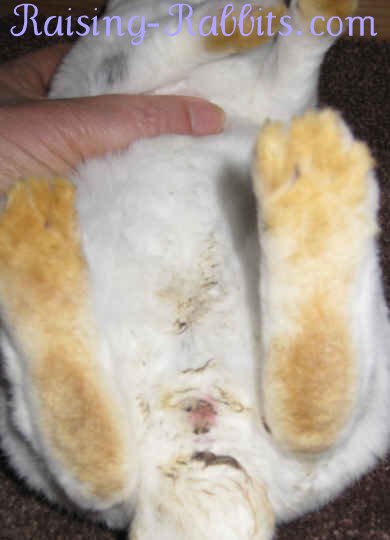
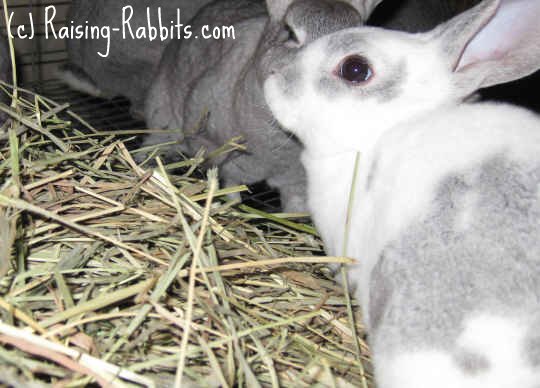
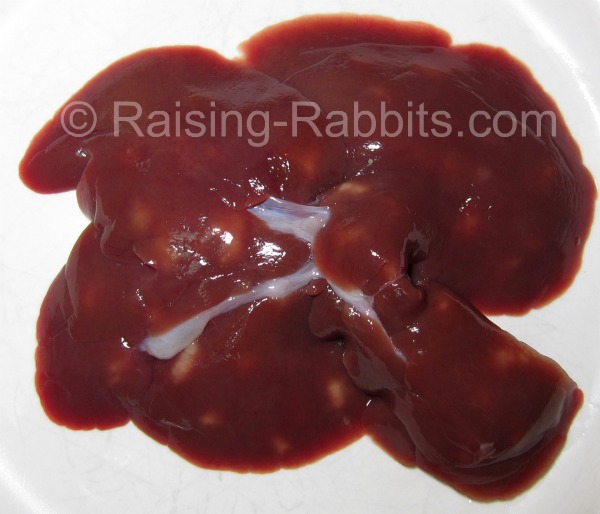
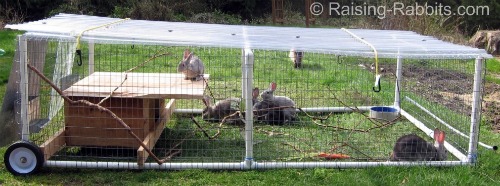
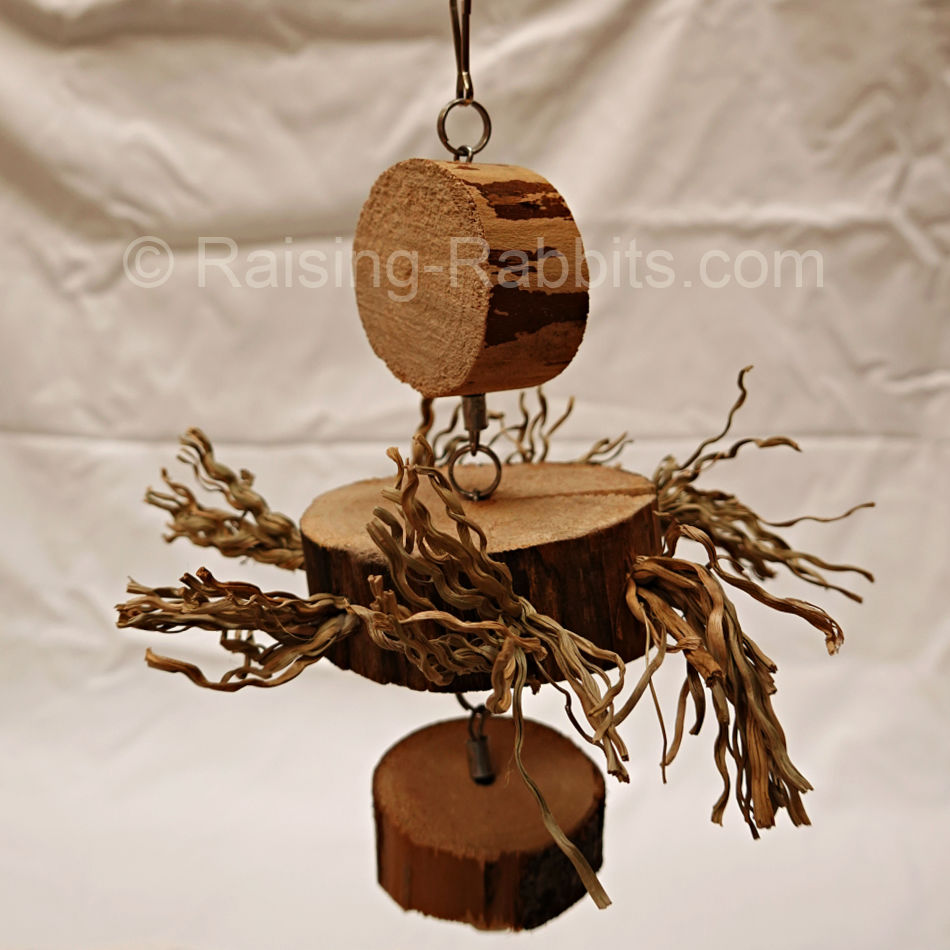
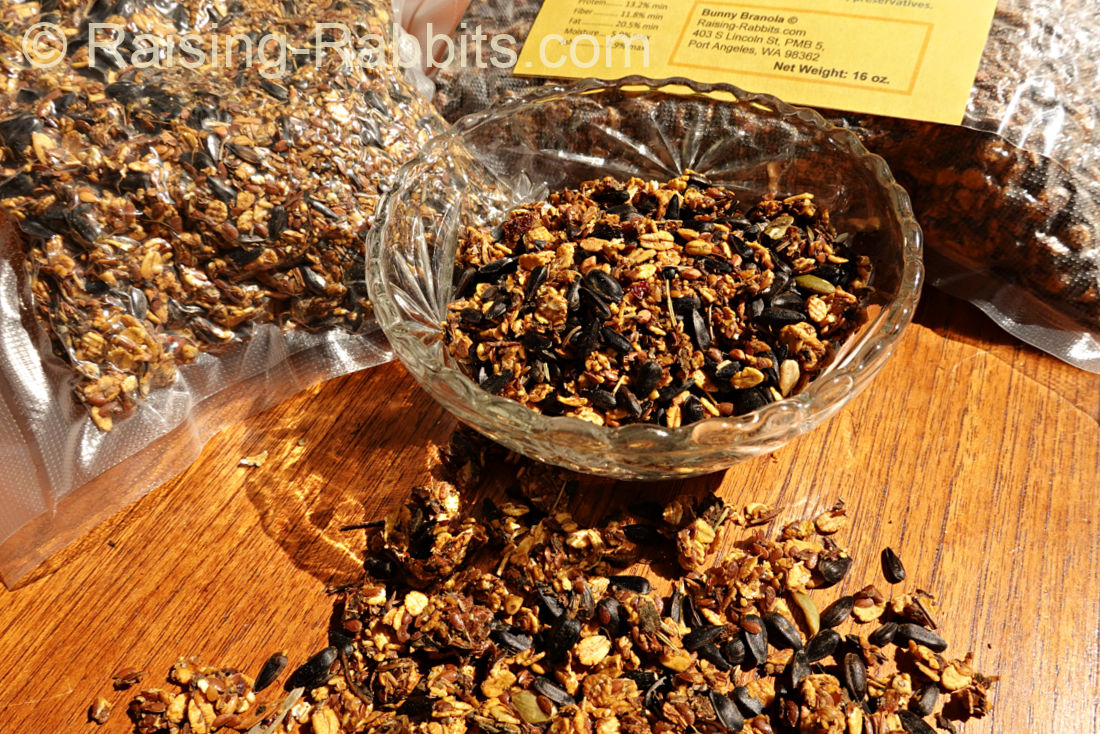
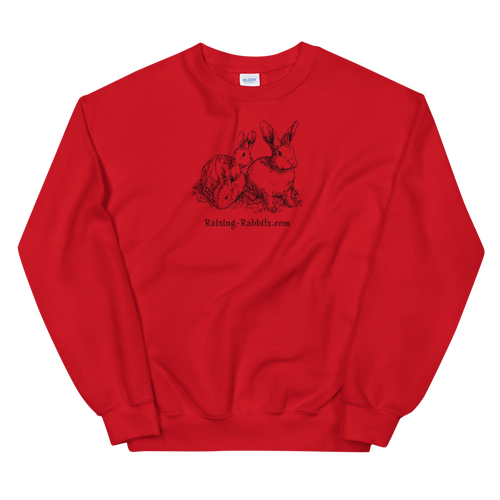





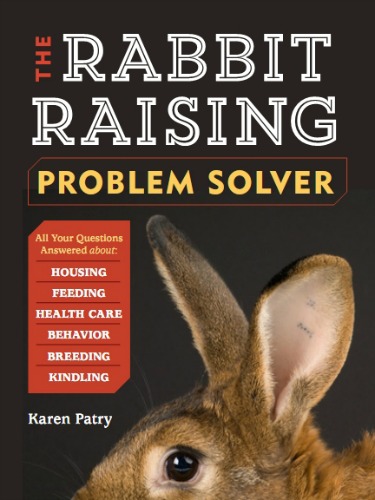

New! Comments
Have your say about what you just read! Leave me a comment in the box below.